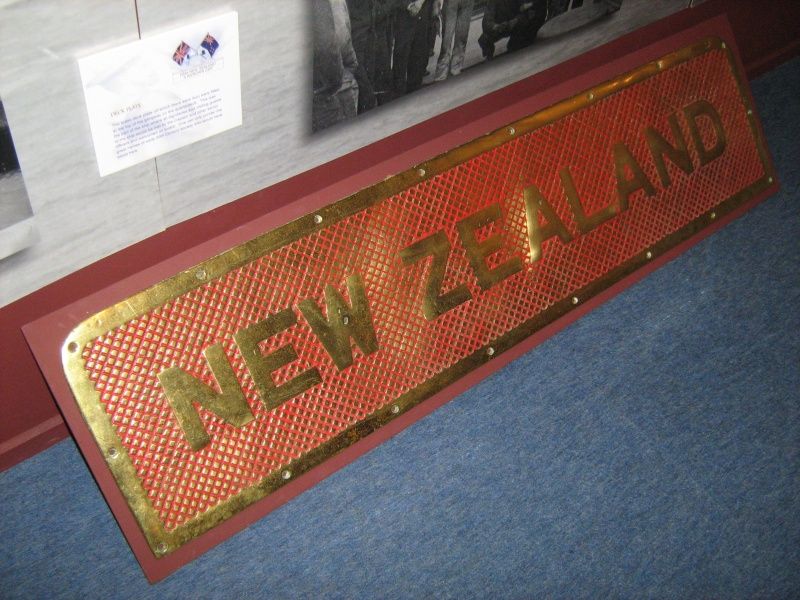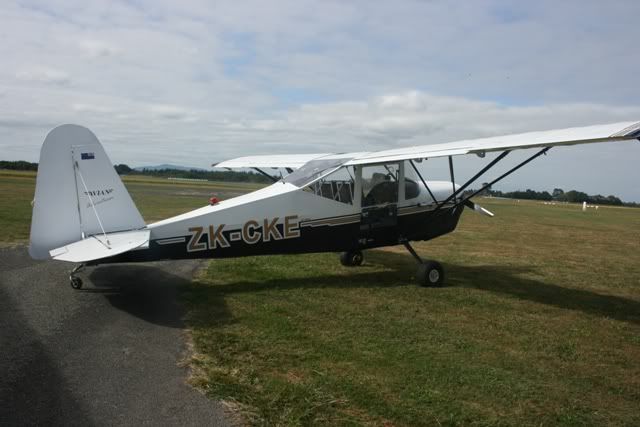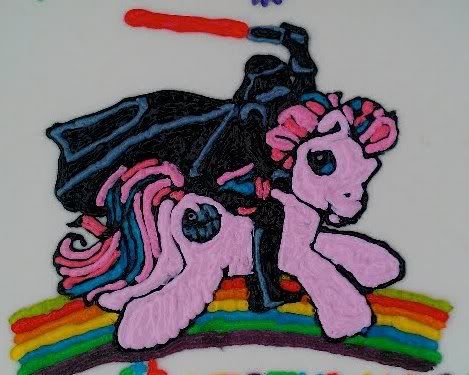|
|
Post by gunny on Jun 23, 2012 21:00:19 GMT 12
My appologies for this format, i have no idea how to post an email here that i found interesting,and disregard my email Dave, but any hints on a better way to do it without photo hosting would be appreciated. The story below tells how the NZ Navy wanted an aircraft carrier in the fleet, but the Government said NO ! WWII - New Zealanders in the Fleet Air Arm The Naval Board acquired two Dido class cruisers with the rationale that they could be used for “any” post-war fleet. The Board sold the idea to the Government on the basis of “considerable economy in man-power and a lower running cost.” These were legitimate reasons, which the Government accepted. However, this was not the main reason behind the Board’s rationale. The Didos were optimised for the anti-aircraft role. This came to the fore in March 1946, when NZNB formally recommended a post-war navy of a light fleet carrier, two cruisers, two destroyers and a tanker, along with the existing corvettes and A/S minesweepers. This was a complete Task Force. The RNZN would have had plenty of former Fleet Air Arm pilots from WWII to man the carrier. These men were RNZNVR pilots and could have been the pilots for the Carrier had the NZNB got its way. However, the Government did not warm to the idea and NZ ended up with Dido Class cruisers only. Colussus Class carrier that the NZNB had in mind for the RNZN The Naval Board had in mind to purchase a Colossus Class carrier and former RNZNVR pilots in the Fleet Air Arm had flown a variety of aircraft in different squadrons. Some of the Squadrons and aircraft were: Sea Hurricane 759/771 and 824 squadrons – Sea Hurricane 809/889 and 894 squadrons – Seafire 1830 squadron – Corsair 731 squadron – Firefly 888 squadron – Martinet 1839 squadron – Hellcat 784 squadron – Fulmar Sea Fires THANKS TO NZ NAVY BRAVEHOST FOR THIS INFORMATION Attachments:
|
|
|
|
Post by gunny on Jun 23, 2012 21:01:29 GMT 12
what could have been Attachments:
|
|
|
|
Post by gunny on Jun 23, 2012 21:02:55 GMT 12
pic2 from email sorry about this but i have no idea how to post an email Attachments:
|
|
|
|
Post by gunny on Jun 23, 2012 21:07:52 GMT 12
F.A.A2 Attachments:
|
|
|
|
Post by Dave Homewood on Jun 24, 2012 0:24:27 GMT 12
This desire by the RNZN to secure a carrier has been discussed on the forum before, a couple of years back. It's interesting and would have made an interesting scenario later when the Korean War began because New Zealand sent several ships into that conflict. Usually there were two frigates or cruisers based in Korean waters at a time. Imagine if we'd had an actual carrier task force, it may have seen RNZN flighters and bombers joining the air war.
Also in the 1950's I guess the RNZN would have modernised to jet fighters, and again the carrier task force may have been deployed to the waters off of Malaya and Borneo during the conflicts NZ fought in there.
If the policy had remained firm, the Skyhawks may have been carrier based! And served in Vietnam.
Back to reality, New Zealanders served in a lot more FAA units than listed above and they flew many more types too. I have spoken with FAA veterans who flew Albacores, Swordfish, Barracudas, Martlets, Mosquitoes, Skua and other types operationally, and many more types in second line squadrons nd training units.
I think at the end of the war if the RNZN had gotten carriers the perfect choice to equip them with would have been Corsairs and Avengers, as there were plenty of experienced Navy and Air Force types who could have flown and maintained them, and they formed the backbone of the British Pacific Fleet in 1945 too, so plenty of spares around at the end of the war. Hobsonville would have made a good lad base. Perhaps Fireflies and Seafires could also have been added.
|
|
|
|
Post by nuuumannn on Jun 24, 2012 1:27:04 GMT 12
You could probably add Sea Fury to that list too, if the Australian and Canadian examples are considered. Following on from the types previously listed, the next generation might have comprised Gannets and Sea Venoms, again like the Australian example, or even Sea Hawks like India. Canada went for American supplied F2H Banshees for their first naval jets.
From the book Blue Water Kiwis by Matthew Wright, in July 1945 the Naval board originally recommended that the RNZN should acquire a Smiter Class escort carrier. Later that year the board requested a light fleet carrier of either the Colossus or the Majestic Class.
Commonwealth carriers HMAS Melbourne and Sydney, INS Vikrant, and HMCS Bonaventure and Magnificent were all Majestic class ships. The Colossus Class vessels went to non Commonwealth nations; Argentina, Brazil, France and the Netherlands - as well as the Royal Navy. The main difference between the two classes was the Majestics had strengthened decks and fittings to enable them to carry heavier aircraft at the expense of reduced fuel load.
|
|
|
|
Post by Dave Homewood on Jun 24, 2012 8:57:18 GMT 12
If the Government tthen had said yes to the proposal, i wonder how long the carrier fleet would have lasted? Australia has ditched its carriers, has Canada still got carriers??
|
|
|
|
Post by nuuumannn on Jun 24, 2012 13:55:56 GMT 12
No, the last remaining Commonwealth (other than Harrier carriers) carrier nation is India, with the former HMS Hermes of Falklands fame still in service as the Viraat although equipped with Sea Harriers, although her second carrier, a converted Russian one is currently undergoing trials. This has MiG-29Ks. INS Vikrant is a museum ship, now. HMCS Bonaventure was decommissioned in 1970 when the Canadians amalgamated their armed forces.
It's possible a NZ carrier might have been in service at least as long as HMS Melbourne; Australia was looking to replace the Melbourne with HMS Invincible, but then the Argies invaded the Falklands...
Does any one have any thoughts about what we might have called our carrier?
|
|
|
|
Post by Dave Homewood on Jun 24, 2012 14:31:42 GMT 12
HMCS Bonaventure sounds like it was named by Julian and Sandy of Round the Horne (fans of classic 1960's BBC Radio comedy will know what I'm on about, haha).
I think HMNZS New Zealand would have been a good name.
|
|
|
|
Post by nuuumannn on Jun 24, 2012 17:01:22 GMT 12
Grand!  |
|
|
|
Post by Dave Homewood on Jun 24, 2012 18:53:21 GMT 12
Maybe we should all get together and re-release Sailing Away as a single to raise money for an all new HMNZS New Zealand. haha
So what sort of carrier was a Colossus class? Or a Majestic class? Were they smaller escort carriers or larger fleet carriers?
|
|
|
|
Post by Bruce on Jun 24, 2012 22:17:20 GMT 12
the Colossus and Majestic classes were very similar - see en.wikipedia.org/wiki/1942_Design_Light_Fleet_CarrierHMAS Melbourne and HMAS Sydney were Majestic Class ships, as were HMCS Boandventure and Magnificent. Quite a number were in service around the world until quite recently, so NZ would have had a decent run out of a ship of its class. |
|
|
|
Post by mumbles on Jun 25, 2012 22:40:45 GMT 12
the Colossus and Majestic classes were very similar - see en.wikipedia.org/wiki/1942_Design_Light_Fleet_CarrierHMAS Melbourne and HMAS Sydney were Majestic Class ships, as were HMCS Boandventure and Magnificent. Quite a number were in service around the world until quite recently, so NZ would have had a decent run out of a ship of its class. Would we ever have been able to afford to run it, the associated Air Wing, and keep a semi-viable Air Force combat capability as well though? |
|
|
|
Post by Dave Homewood on Jun 25, 2012 23:13:44 GMT 12
From 1946 onwards the Air Force was on the bones of its arse. The Interum Air Force as it became known was using worn out aeroplanes and had a skeleton staff of underpaid and very disgruntled staff.
Things eventually began to pick up, and by the 1950's when the strike wing was formed with four squadrons of Mustangs, and two of Vampires, to replace a single squadron of clapped out Mossies and some armed Harvards, the RNZAF went in the right direction again for a while but by 1956 they were severely cut back again to just two fighter squadrons.
So the cost of maintaining three or so squadrons for the NZ Fleet Air Arm, plus the carrier itself and all the escort and supply ships that went with it, plus all the staff and then the support staff on land who maintained all the equipment, in a fairly peaceful and benign region, I doubt any politician would have given it consideration, and probably very few memers of the public. Even during the Korean conflict and the Malayan Emergency a carry fleet would seem excessive for such a small nation I think. What a shame, it could have been great.
I imagine some what-if models could be built around the carrier fleet aircraft of HMNZS New Zealand. Seafire 17's with RNZAF Pacific style roundels, etc.
|
|
|
|
Post by gunny on Jun 27, 2012 1:53:23 GMT 12
It would have been great.
The reason i posted this is i never knew it was discussed at all or even considered for the reasons given here of funding ect.
|
|
|
|
Post by meo4 on Jun 27, 2012 20:07:41 GMT 12
Guess if they had combined RNZAF RNZN squadrons could of been achieved.
The RNZN at one stage operated two cruisers and 6 frigates so I'm sure they would of had numbers in the 50s early 60s.
|
|
|
|
Post by ngatimozart on Jul 7, 2012 14:14:25 GMT 12
Good video. Yes we had the numbers in the 50's & 60's but not the politcal will. Wold've been nice though.
|
|
|
|
Post by davidd on Sept 11, 2012 10:28:34 GMT 12
We just have to remember how POOR the British Commonwealth nations were post WW2, particularly Britain, which withdrew ALL her six Fleet carriers (the full-size giants!) into reserve and relied on a small number of Light Fleets (Collosus/Majestic classes) to carry the FAA contribution to Korea. So you are right Dave H, the RNZN was as poorly off as the RNZAF in the immediate post-war years, and even our two cruisers (DIDO and BLACK PRINCE, which were only leased, never owned) were hardly ever in commission at the same time, and a good proportion of the rest of the ships were also in reserve almost permanently. If they did not have any REAL work for these ships, into reserve they went. And that was the least of their troubles; a large proportion of the officer corps (including the captains) manning the cruisers were RN, as was a smaller proportion of the ratings (the NZ taypayer had to provide the cost of these man as well as our own of course, as had always been the case since we began operating cruisers, but then we chose to do it that way as it was probably cheaper than actually owning them.) Also the cruisers were always at the beck and call of the Admiralty in time of emergency, and could be called away to the other side of the world - it was all in the contract we agreed to! They were rightly regarded as a powerful asset for Empire/Commonwealth defence, and could not be artifically "fenced off" in a small part of the world's oceans - flexibility was seen as the key, and who could argue against that!
|
|
|
|
Post by davidd on Sept 11, 2012 10:44:36 GMT 12
As an addendum to the above, using the RNZAF's Corsairs postwar was not on (althought the Americans gave us dispensation to take 24 to Japan for occupation duties, and on cessation of such duties they were to be scrapped.) The Corsairs were supplied by the American taxpayer to assist the United States armed forces in the Pacific to beat and batter the Japanese all the way to Tokyo, although Fleet Admiral Ernest J King (CINCPAC) eventually confined our forces to former British territory. This general philosophy suited us and the Americans - we didn't have to pay for the aircraft, and every New Zealander lost on operations could be seen (in the New World) as one American life saved in the greater scheme of things. Might sound a little cynical, but America did not want NZ cheering from the side lines, they wanted a true blood and guts commitment, and NZ was happy to oblige. Strangley enough (to some modern eyes) the NZ Labour party was all for this at the time, as they were great fans of collective defence, and spreading of risk, etc., and considered it just a part of earning true statehood and international respect in those days when most Americans still thought NZ was a colony of GB. So the dream of maintaining a (small) carrier-centred fleet remained just that - it didn't stand a snowball's chance in a blast furnace.
David D
|
|
|
|
Post by expatkiwi on Sept 11, 2012 11:07:59 GMT 12
An aircraft carrier is one VERY expensive piece of hardware to maintain. If you're looking for a way to project our airpower for a greater period of time in the EEZ, then a cheaper alternative would be airships of the Zepplin-NT type. They have long endurance, and they would be able to call in RNZAF aircraft if they spot anything suspicious.
|
|












